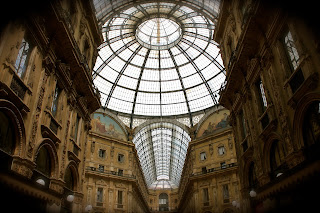En route, I proposed we stop for lunch at Trattoria La Buca, a family-run trattoria in Zibello, about thirty kilometres from Parma, in Emilia-Romagna. I had read about this trattoria in Bill Buford's Heat, and was bent on sampling the famed hand-made pasta and culatello, based on this write-up in Buford's book:
"I went to Italy, where, during my first lunch, I ate a homemade pasta, and my life, in a small but enduring way, was never the same. [...] My friend had mentioned several dishes in addition to the pastas: eel, frog legs, trip, and culatello, a specialty of the village. Culo means "ass". Culatello translates loosely as "buttness" and is made from the hindquarters of a pig—boned, stuffed into a bladder, cured, and hung for two years in the damp local cellars. The method is deemed unmodern by the U.S. Department of Agriculture, and culatello is forbidden in America."
We were beyond desperate to try the buttness.
When Mara and I arrived, we were greeted by Laura, who runs the show with her mother, Miriam, the fifth woman in successive generations to be handling the trattoria. Miriam, who so impressed Buford that she became a regular in his book, was in Milan filming an episode of MasterChef.
After a tour of the trattoria's cantina, where the culatelli were hung, "refrigerated by nothing more than the breezes off the Po [River]" (Buford's quite the poet), we settled on culatello, salame, tortelli di zucca, tortelli di ricotta ed erbette and tagliatelle con culatello. We had skipped breakfast in preparation.
The culatello and the pasta were, as Buford observed, life-changing. And perhaps life-creating? In the throes of our food comas, Mara and I were joined by Laura's father, a 88-year-old with a penchant for the shaka sign who definitely wouldn't have been issued the senior rate at the movies. His secret for winding back the clock? Culatello.
Oh, buttness. The fountain of youth.
Trattoria La Buca
Culatello hanging in la catina
Il culatello
Tortelli di zucca and tortelli di ricotta ed erbette
We spent the rest of the evening getting pampered at our Lido Palace, a historic Liberty palazzo whose guests over the years have included Archduke Franz Ferdinand and King Vittorio Emanuele II. Our peers, no doubt.
The next day, based on the recommendation of the concierge at the hotel, who suggested we head for the "chirp, chirp, chirp" of the hills, we opted against the groupie life, and decided to drive to the Dolomites instead. After a stop at the nearby turquoise Lago di Tenno, and a windsurfing session for Mara, we were on our way.
Lido Palace
Lago di Garda
Lago di Tenno
Windsurfers, Riva del Garda















































